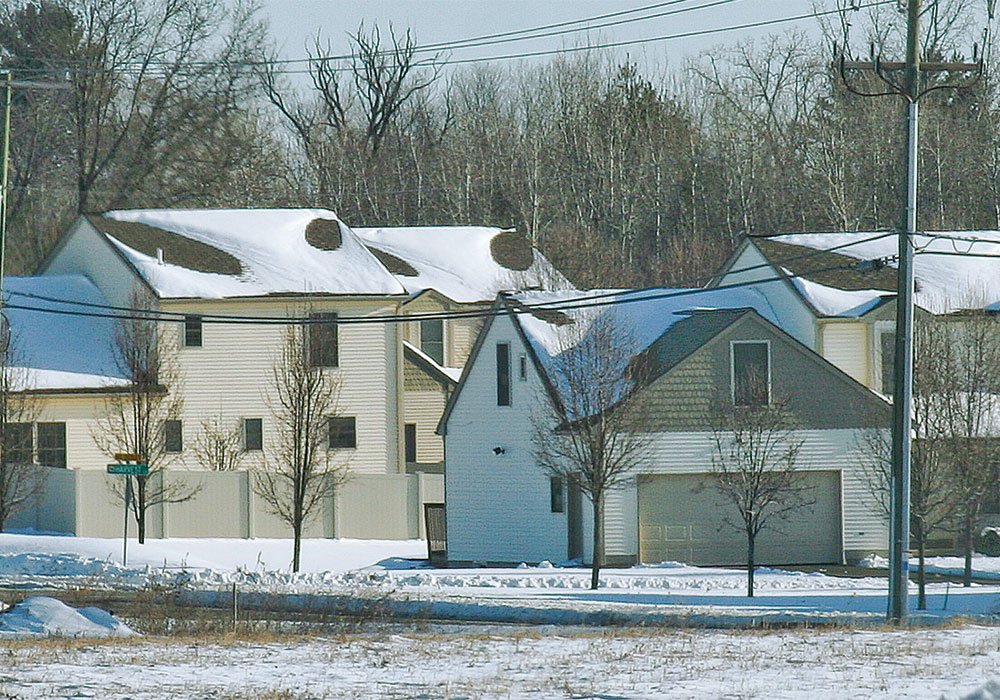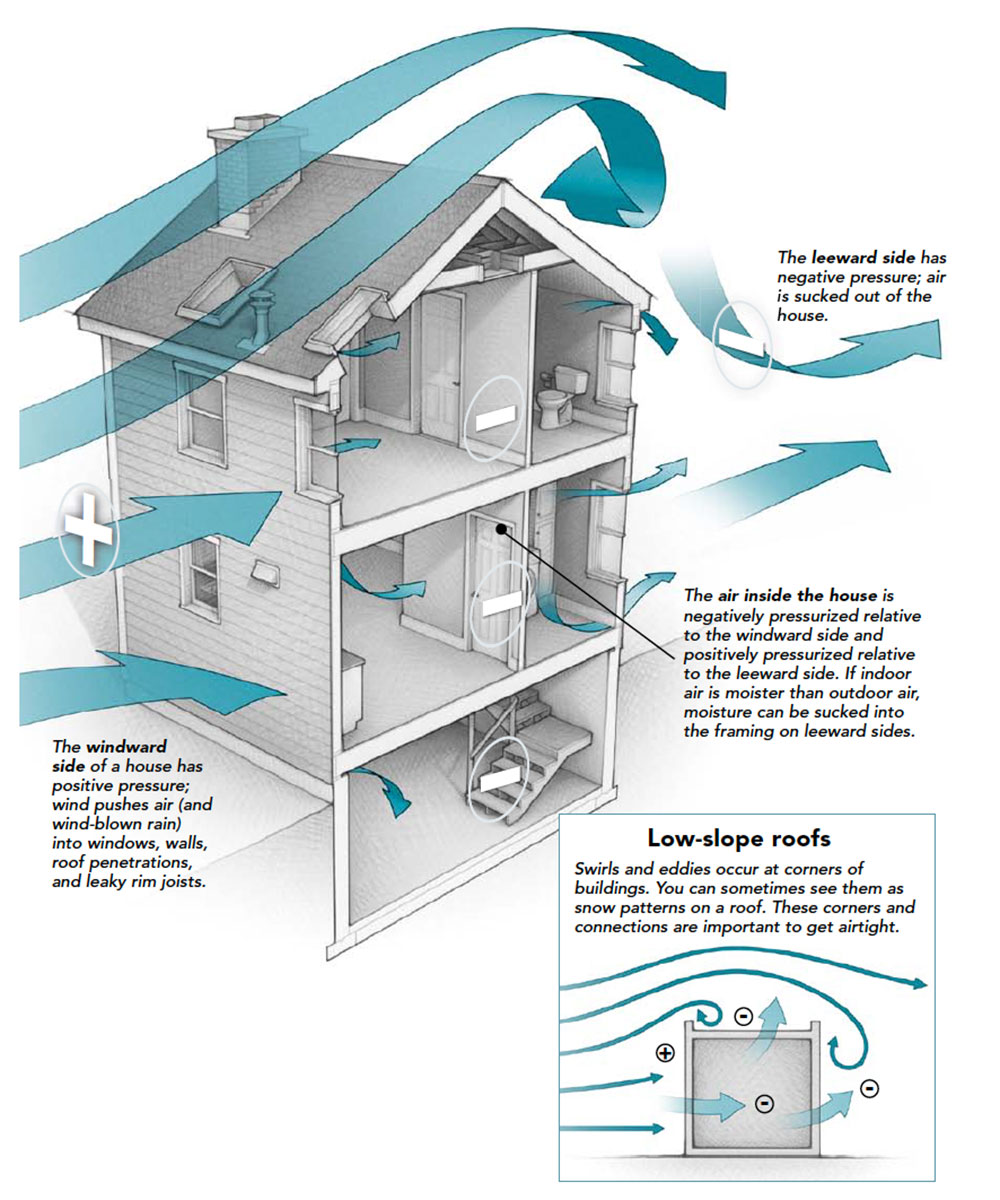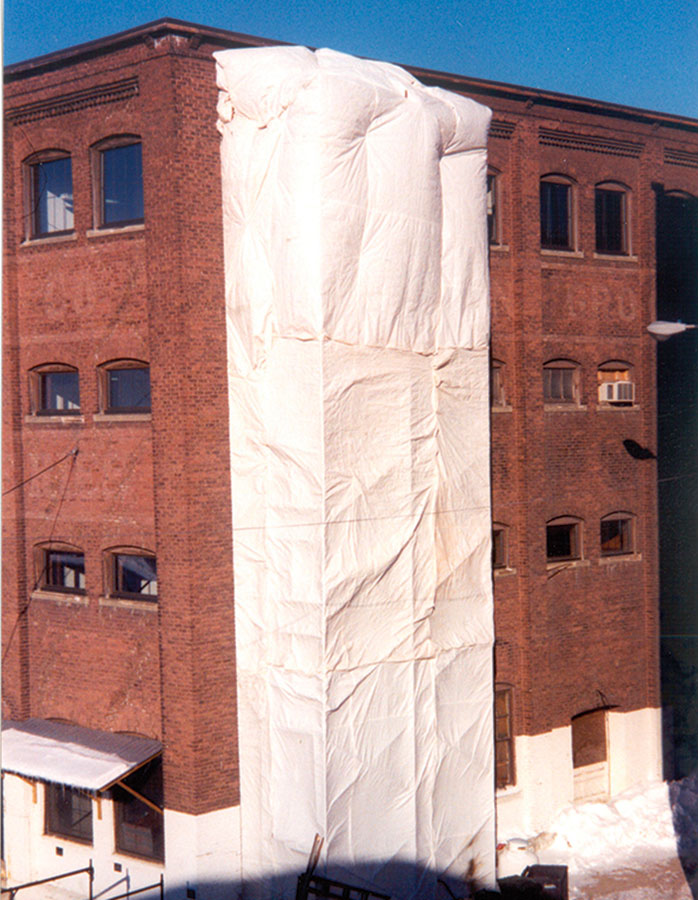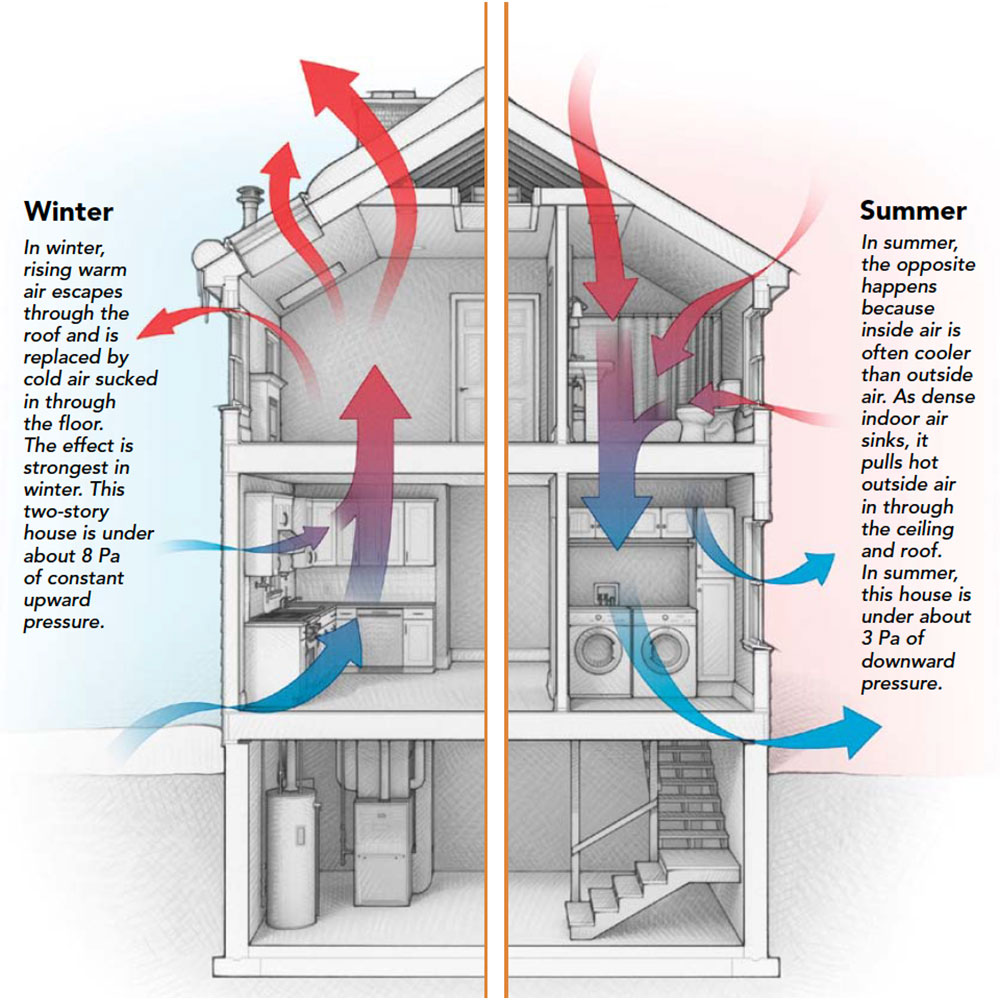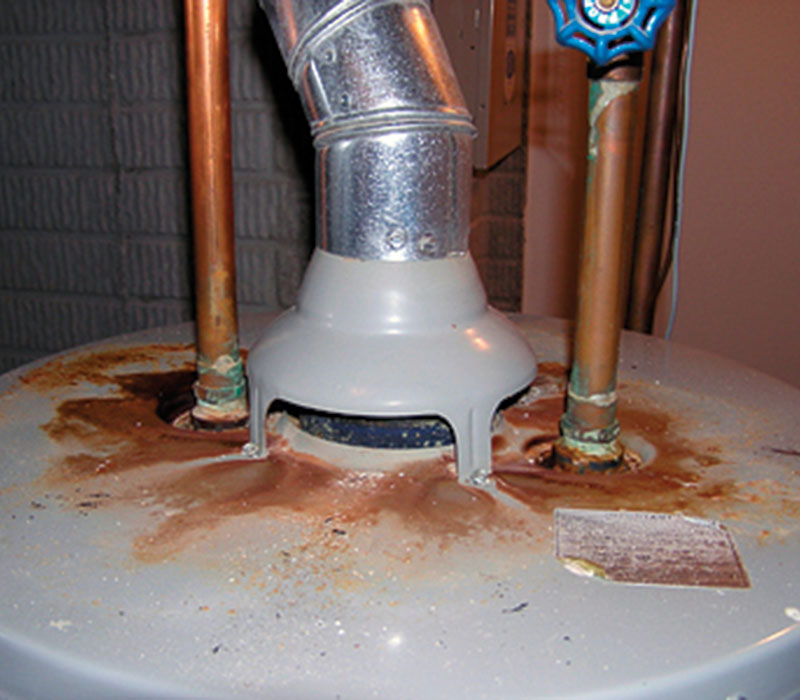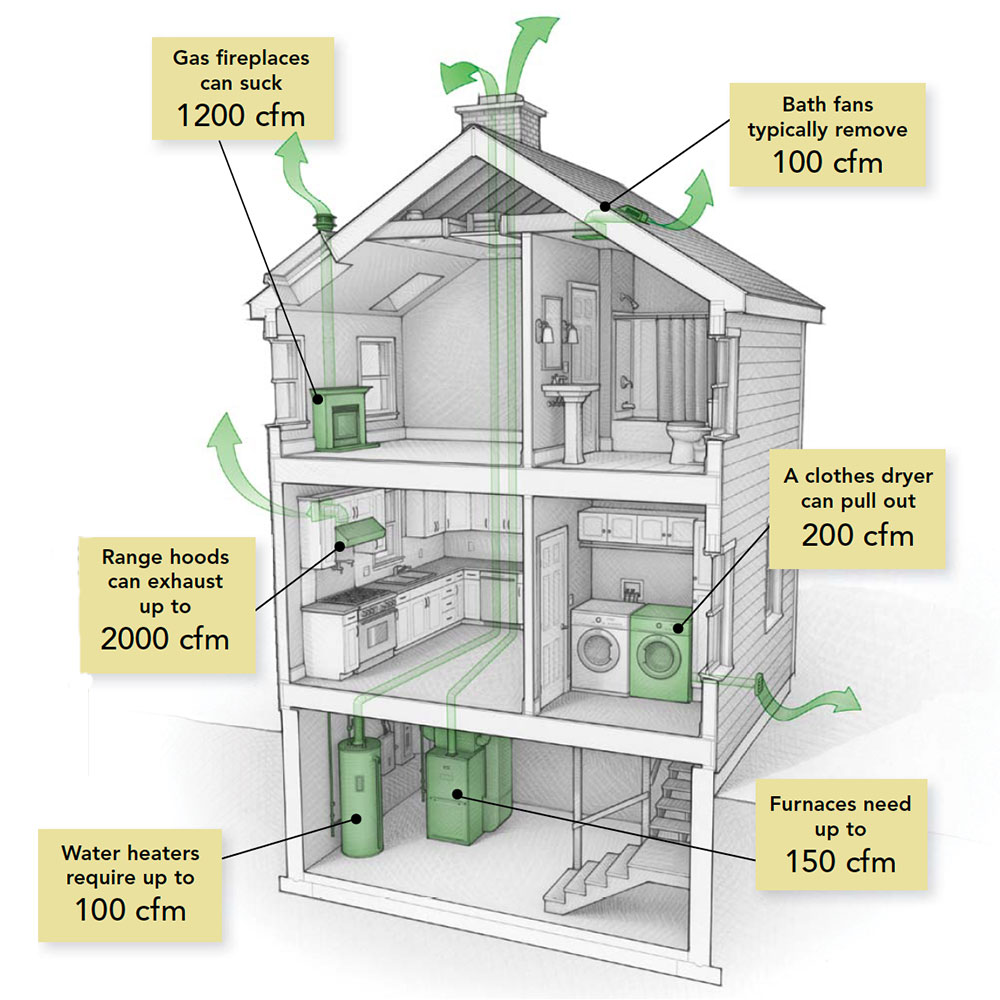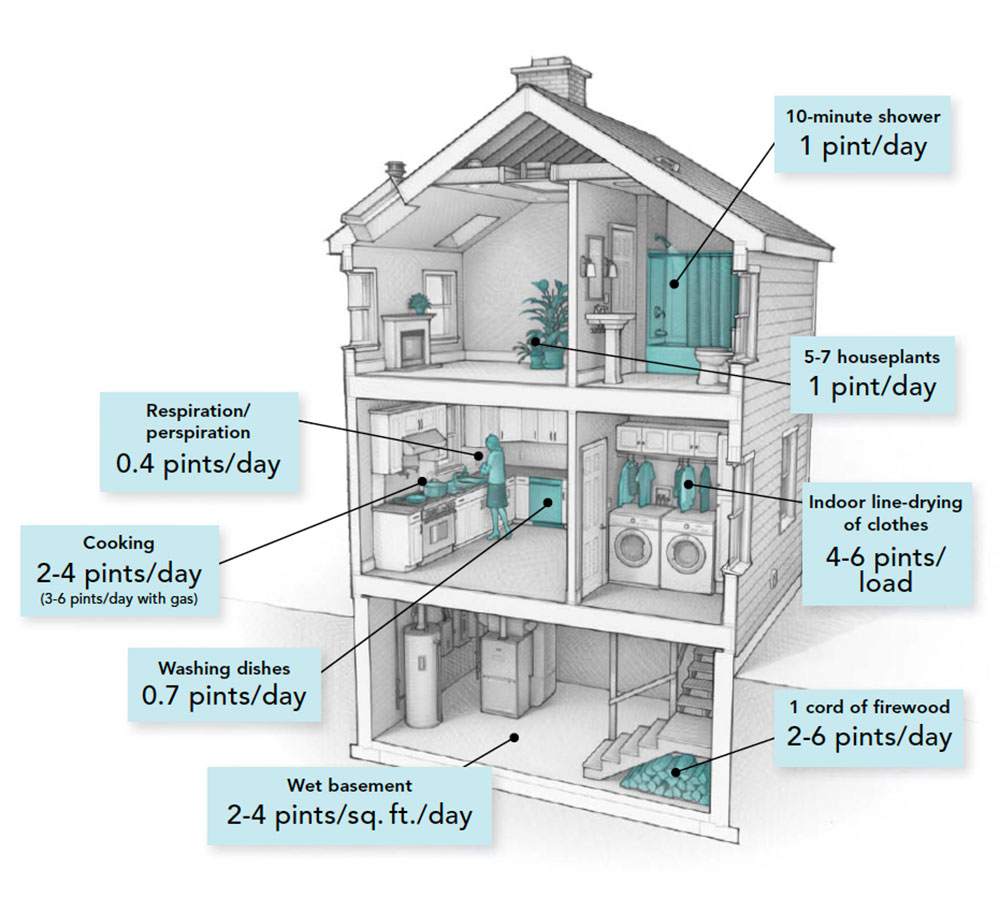Air Leaks: How They Rot Houses and Waste Energy
One third of the energy you buy probably leaks through holes in your house.
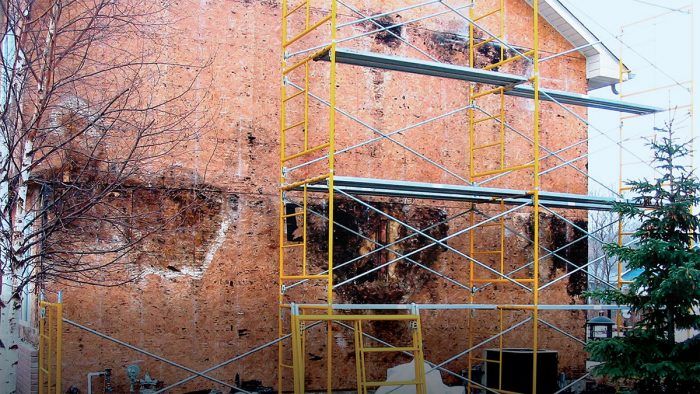
Synopsis: When it comes to conserving energy in your home, one of the best things you can do is identify and seal air leaks. In this article, building-science specialist John Straube outlines the various ways in which a house can leak conditioned air, wasting resources and ultimately your money. Wind pushes drafts through a leaky house, a definite problem in the cold winter months. The stack effect can be problematic in both summer and winter. In winter, rising warm air leaks through the roof and is replaced by cold air sucked in through the bottom floor. In summer, warm air is pulled in through the roof while cool conditioned air is forced out of lower floors. In a house, mechanicals also contribute. Devices such as gas fireplaces, dryers, furnaces, water heaters, range hoods, and bath fans remove conditioned air. The best solution is to build tight and ventilate right.
Stopping air is the second-most-important job of a building enclosure. Next to rain, air leaks through walls, roofs, and floors can have the most damaging effect on the durability of a house. Uncontrolled airflow through the shell not only carries moisture into framing cavities, causing mold and rot, but it also can account for a huge portion of a home’s energy use and can cause indoor-air-quality problems.
A tight house is better than a leaky house, with a caveat: A tight house without a ventilation system is just as bad as a leaky house with no ventilation system — maybe worse. Energy efficiency requires a tight shell; good indoor-air quality requires fresh outdoor air. Ideally, the fresh air should come not from random accidental leaks of unknown size and quantity, but from a known source at a known rate. For this to happen, the house needs an adequate air barrier and a controlled ventilation path.
In a leaky house, large volumes of air — driven by exhaust fans, the stack effect, and wind — can blow through the floor, walls, and ceiling. Because air usually contains water vapor, these uncontrolled air leaks can cause condensation, mold, and rot.
The only way you can know for sure that the air coming into a house is clean is to know where it’s coming from. People who say “I want my house to breathe” are really saying “I want to rely on the mistakes that were made by the plumber and the electrician to provide me with fresh air.” That’s exceptionally dangerous. Any air that enters a house through leaks in the building envelope may be loaded with pollutants. The dead squirrel in your attic and the SUV idling in your garage are not going to provide you and your family with fresh indoor air.
Many indoor-air-quality problems are related to poor control of air flowing through an enclosure that has been damaged by exposure to moisture, heat, or UV-rays. Good indoor-air quality comes from having a good air barrier. Only with a good air barrier can we know where the air is coming from and have a chance that air quality (and quantity) can be controlled.
The importance of an air barrier is recognized in Canada, where the national building code has required one for 25 years. In the United States, it’s absent from state energy codes and has just recently been added to the 2009 version of ASHRAE’s Energy Efficiency Standard (ASHRAE 90.1). In 2006, the International Residential Code tightened up the language to require walls to be sealed, and as of 2009, the IECC requires airtightness testing.
Wind can push drafts through a house; air barriers push back
Many houses built to code are leaky. Air leaks can be responsible for a third or more of the energy loss in typical houses.
What pushes and pulls air through a house? Three things: wind, fans, and the stack effect. Wind is somewhat predictable, or at least its average speed and direction are. Fans include kitchen and bath exhaust fans, HVAC equipment fans, and clothes dryers. The stack effect generates pressure because warm air rises, pushing up and out on the ceiling in cold weather (see “How It Works” in FHB #213 and at FineHomebuilding.com).
Peak wind loads that are listed in the model building codes are fairly high (usually more than 20 lb. per sq. ft. or 1000 pascals). On average, however, local wind pressure is quite a bit lower. For a house, 5 Pa is likely, and in a high-rise building, maybe 40 Pa, 50 Pa, or even 60 Pa. The pressure exerted by a blower door—50 Pa—is roughly equal to the pressure of a 16-mph wind or around 1 lb. per sq. ft.
A low-slope roof (less than 3-in-12 pitch) is usually under negative pressure when the wind blows over it. Air is sucked up through the roof because the aerodynamics of the wind passing over the roof’s leading edge cause negative pressure. On a house with a steep roof (more than 3-in-12), the pressure is positive on the windward side and negative on the leeward side.
Wind is highly complicated, however. When wind tries to flow around buildings, the highest pressure is on the “sweet spot” in the middle. As the wind goes around corners, it creates large swirls and negative pressures (visible on snowy roofs after a high wind). Wind-related structural damage often occurs at these high-pressure spots or at areas of low-pressure swirling.
Wind exerts positive pressure on the windward walls of a building, causing air leaks on the side of the building facing the wind. On the leeward side, negative pressure sucks indoor air through walls and windows.
The stack effect: When buildings act like chimneys
Like wind, the stack effect can push large volumes of air through an envelope. In winter, warm air in a heated building is lighter (less dense) than cold air outside; that warm bubble of air wants to rise up and out. The flow of air leaving the top of the building draws cold air in through cracks at the bottom.
The reverse happens in summer, when hot air outside an air-conditioned house can push cooler indoor air down from the ceiling and out cracks in the basement. This can cause moisture problems on the top floor as humid exterior air is drawn through leaks in the upper floor’s walls—especially for houses with leaky rim joists.
The differences in temperature and pressure are less during the summer than during the winter. When it’s cold outside, the pressure created by the stack effect is 4 Pa per story; when it’s hot, the pressure is about 1.5 Pa per story. However, unlike most other pressures, the stack effect acts every hour of every cold day, so the flows generated by the stack effect are significant.
HVAC equipment can overpower wind and the stack effect
Air pressure created by fans—particularly range hoods, dryer exhausts, and large vent fans—can overwhelm wind and the stack effect. If we blow air into a building, we pressurize it. A 10-Pa pressurization spreads through a building, and pressure increases everywhere. Negative pressurization drops pressure everywhere around the building.
High-end houses often have large, powerful downdraft range hoods with exhaust fans that are rated at 1000 cfm or more. If you don’t provide makeup air for such a large volume of exhaust, the whole house will become strongly negatively pressurized. You’ll start sucking on the garage, and you’ll breathe air sucked backward through your water-heater vent. You will harvest radon from the soil around the house and suck air backward down your fireplace, bringing deadly carbon monoxide with it. People die every year because of backdrafting created by exhaust appliances like this.
If you want to avoid sucking air backward through the combustion appliances and cracks in your home, provide makeup air for your range hood, dryer, and other exhaust appliances. The 2009 Irc (m1503.4) requires a separate mechanical makeup-air unit for range hoods of more than 400-cfm capacity.
Moisture rides on air currents
By controlling airflow, you also control the moisture that moves with air. If moist indoor air hits a cold surface, condensation can result. An air barrier prevents cold surfaces from contacting humid indoor air. Air has a maximum storage capacity for water vapor that depends on temperature. Warm air can store lots of moisture, while cold air can store very little. As the temperature falls from 80°F down to 20°F, the amount of moisture that can be stored in the air changes by a factor of 10. This is like a gas tank that shrinks as the temperature gets colder. When it’s hot, you can store a lot in this tank; when it’s cold, however, you can’t store much at all. If you had a large tank filled with gas and you shrunk it, eventually the gas would spill over. That’s condensation.
Old leaky homes didn’t have condensation problems
Older buildings rarely had condensation problems in cold weather because they were so leaky. The relative humidity in old houses rarely rose above 25% during the winter. As we have built tighter houses with inadequate or nonexistent mechanical ventilation, the indoor relative humidity (rH) has gone up. In a tight, unventilated house, the amount of moisture in the air is dramatically different from that in an old leaky house. condensation occurs wherever water vapor can find a cold spot: on the roof or wall sheathing, on the inside faces of the windows, and inside the walls.
Let’s say that it’s 30°F outside and the outdoor relative humidity is 50%. If that outdoor air enters a 70°F house, the amount of moisture that’s in the air stays the same, but the “tank” gets bigger because the storage capacity of the air increases with the temperature. As a result, the relative humidity initially drops. No condensation can occur if the air is heated up. However, once the outdoor air is in the house, moisture is added to the indoor air but the temperature of the house stays the same. Hence, the relative humidity and the absolute moisture content rise. How do you add moisture to the air? You breathe, sweat, boil water, take hot showers, and grow houseplants.
Let’s say now that the indoor air leaks out of the house through holes in the enclosure. If the temperature of the outdoor air is around 30°F, the indoor air will drop all of the moisture that it gained inside on the way out, dumping it on the cold sheathing surface. because any condensation that forms in walls can cause puddles—and in extreme cases, rot the house’s framing—condensation is something you will want to avoid. Installing an air barrier is one good way to help prevent condensation.
How much moisture do we really add to the air?
A family of four can add, on average, up to 25 pints of water to the air simply by washing dishes, taking showers, cooking, and breathing. Adding 4 pints of water to the air in a house at 70°F and 30% RH can boost the RH to 50%. Eight pints can boost RH to 70%. Exhaust ventilation at the source of the moisture is the best way to keep moisture problems in check.
Air-conditioning also can create condensing surfaces
In summer, the same phenomenon can happen in reverse. When hot, humid outdoor air (85°F, 75% rH) leaks inside, the moisture in the air condenses when it hits a surface below about 76°F—for example, on plastic vapor barriers cooled by air-conditioning.
In a tight house with a good air barrier and a supply-only ventilation system, however, most of the air that’s drawn inside comes through the air conditioner, so the first cold surfaces it sees are the cooling coils.
If you have air leaks in the envelope, you usually can’t see the condensation—unless you’re a forensic engineer who goes around cutting holes in walls. However, condensation is sometimes easily visible in the attic; all you have to do is look for frost or dampness forming on the underside of the OSb or plywood roof sheathing. It doesn’t take much of a hole in the ceiling of a humid house for condensation to accumulate as frost. Then when the sun warms up the black shingle roof, the frost melts, the water falls, and you assume that you have a roof leak. In short, air that leaks through your walls, windows, roof, or basement can result in nothing but trouble. building tight and ventilating right remain the best advice.
– John Straube, Ph.D., P.Eng., is a principal of Building Science Corp. and a professor of building science at the University of Waterloo in Ontario.
Drawings: Christopher Mills.
For more photos, drawings, and details, click the View PDF button below:

